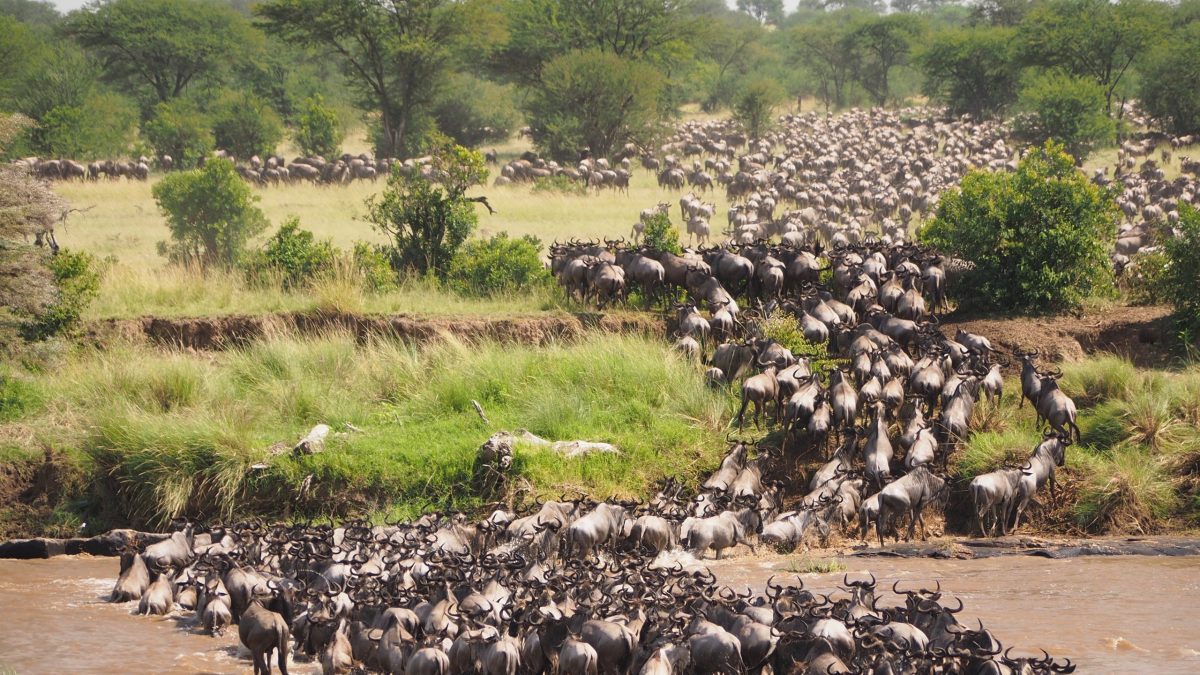The Great Migration Kenya
The Great Migration Kenya is one of the most awe-inspiring natural events on the planet, captivating wildlife enthusiasts and adventurers from all corners of the globe. Every year, millions of wildebeest, zebras, and gazelles embark on an epic journey across the vast plains of Kenya in search of greener pastures. This remarkable phenomenon is not only a visual spectacle but also an extraordinary testament to the resilience and adaptability of nature. In this blog, we will delve into the wonders of the Great Migration in Kenya, its significance, and the best ways to experience this incredible phenomenon firsthand.
Understanding the Great Migration: The Great Migration is an annual cycle where massive herds of wildebeest, accompanied by zebras and gazelles, traverse the Serengeti in Tanzania and cross over to Kenya’s Maasai Mara in search of fresh grazing lands. This natural phenomenon is driven by seasonal changes, availability of food, and the constant quest for survival. The journey covers thousands of kilometers, marked by perilous river crossings, thrilling predator-prey interactions, and the perpetual rhythm of life on the African savannah.
Timing and Route: To witness the Great Migration in Kenya, it is crucial to plan your visit during the right time of year. The migration typically follows a predictable pattern, although the exact timing can vary slightly. The herds start moving northward in June and July, reaching the Maasai Mara around August or September. They remain in Kenya until October or November before returning to the Serengeti. Understanding the migration’s route and timing will greatly enhance your chances of witnessing this spectacle in its full glory.
Experiencing the Great Migration: There are several ways to experience the Great Migration in Kenya, depending on your preferences and budget. Safaris, both in vehicles and on foot, offer an up-close encounter with the migrating herds, allowing you to witness the dramatic river crossings and the ensuing struggles for survival. Hot air balloon rides provide a unique aerial perspective, offering breathtaking panoramic views of the expansive herds as they move across the savannah. Additionally, guided walking safaris and mobile camps offer immersive experiences, providing an intimate connection with the wildlife and the surrounding ecosystem.
Wildlife Encounters: The Great Migration not only involves the massive herds but also attracts an abundance of predators, including lions, cheetahs, leopards, and crocodiles. These predators capitalize on the abundance of prey, resulting in thrilling and often heart-stopping interactions. Witnessing a lioness stalking a vulnerable wildebeest or a crocodile lunging out of the water during a river crossing is an experience that will forever be etched in your memory.
Conservation and Sustainability: The Great Migration is not only a natural wonder but also a reminder of the importance of conservation and sustainability. Protecting the habitats, wildlife, and ecosystems that facilitate this magnificent event is crucial to ensure its long-term survival. Responsible tourism practices, supporting local communities, and contributing to conservation efforts are all ways in which we can help preserve this extraordinary phenomenon for future generations.
Conclusion: The Great Migration in Kenya is an unparalleled testament to the power and beauty of nature. It is an experience that immerses you in the sights, sounds, and emotions of an ancient cycle, as millions of animals traverse the plains in search of greener pastures. Witnessing this extraordinary event firsthand is a privilege that will leave you in awe and with a profound appreciation for the wonders of the natural world. So, pack your bags, embark on an adventure, and prepare to be captivated by the Great Migration in Kenya – a journey you will never forget.

